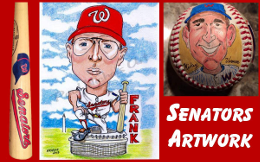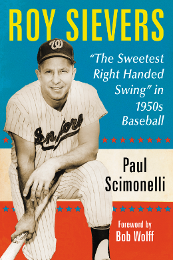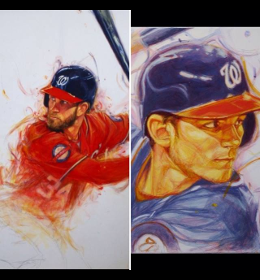The Book, Moneyball, The Art of Winning an Unfair game, discusses the use of statistical analysis, saber metrics, by General Manger Billy Beane to gain a completive advantage.
In fact the original Moneyball is the story of the building of the 1867 Nationals. Arthur Pue Gorman, a young, just 28 years old, but exceedingly resourceful individual, managed a team in a small town. His problem, how to compete with the big money teams in New York and Brooklyn. There was no industry or business to speak of in the District, in fact the business of Washington was not business but government.
Gorman didn’t have money but he had some talent. He did have connections and a willing partner in Treasury Secretary Hugh McCulloch. McCulloch was an able businessman turned banker. He was also a baseball fan. President Andrew Johnson was an avid fan also; in fact he allowed the team to use part of the White House yard to store items from the team.
Gorman’s plan was ridiculously simple, have the government pay the players. Players would come to Washington for a nice paycheck. The Treasury Department would pay them. While in town why not play a game or two for the Washington Nationals. President Johnson was known to release Federal employees to watch baseball games, why not let them play too. Talk about competitive advantage.
So it came to pass that the Treasury Department fielded the first professional baseball team.[i].
In April, the Nationals secured the services of George Wright. Wright was one of the best players in the game. The 20-year-old second baseman had played for the Unions of Morrisania. He was given a position under Col. Jones in the Treasury Department. In 1866 Wright had played for the Union and Gotham clubs of New York.
With Wright signed the Nationals quickly moved to acquire more top talent from New York and Brooklyn. Once he was secured others quickly followed.
George Fletcher, from the Brooklyn Excelsior club. He played first, third and pitched. He scored 62 runs in 19 games.
Frank Norton, also from the Brooklyn Excelsior club. He was considered to be the best player on that club. Considered a good defensive player, he played third, short, outfield and could also catch this would allow Washington to move Harry Berthrong[1] to the outfield where his speed would be a big plus.
Andrew Gibney had played for the Gotham club of New York in 1865.
Holdovers from the 1866 club were;
Harry McLean, played outfield would be a reserve.
Hodges, played first, would be a reserve.
Ed Parker, played second, would move to first.
Eb Smith, played short and third, would be an outfielder.
George Fox played third and would remain there.
Sy Studley, played outfield and would remain there.
Harry Berthrong,[2] played catcher, short and in the outfield, would catch.
Pitching would be handled by Will Williams. He was considered to be a very good pitcher with a strong arm. He was also a law student at Georgetown University. [3]
The infield was manned by first baseman Ed Parker, second base was occupied by George Wright, third base was played by George Fox, a former member of the Eckford Club of Brooklyn and the shortstop was Frank Norton.
The outfield consisted of leftfielder George Fletcher, centerfielder Andrew Gibney and the right fielder was Sy Studley.[4] The Nationals add veteran pitcher Asa Brainard for the last part of the season.
[1] Later played for the Washington Olympics
[2] Harry Berthrong was one of the best athletes in the country.
[3] Williams, a member of the Nationals since 1861, would be joined on the mound by Asa Brainard, soon to be an excellent pitcher and a starter on the 1869 Cincinnati Red Stockings. Brainard also played for the Brooklyn Excelsior club in 1866.
[4] Harry Berthrong and Seymour Studley were Civil War veterans






